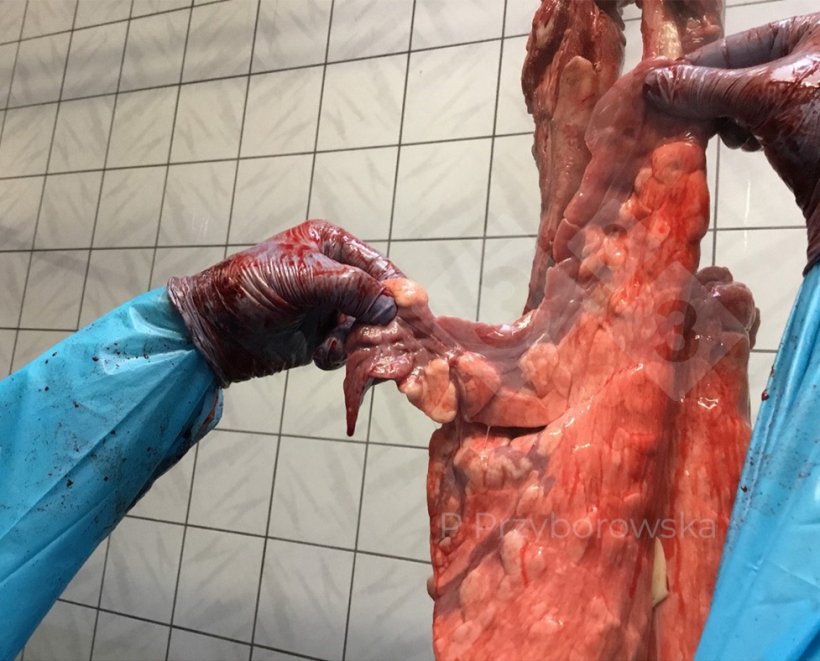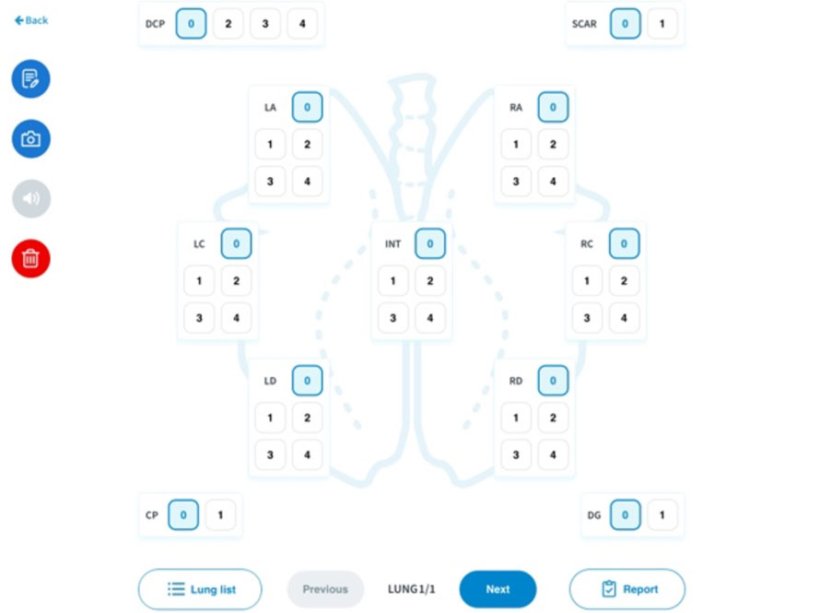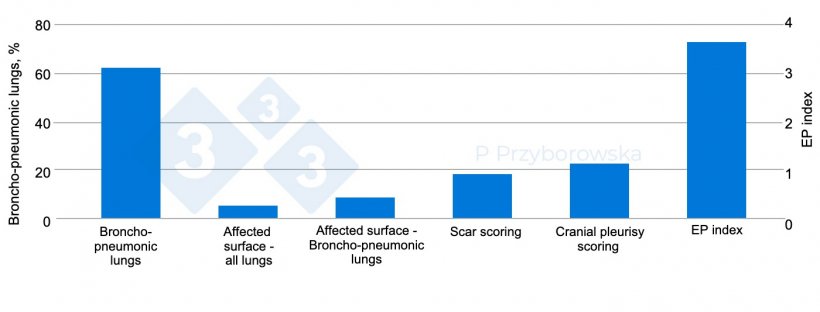Porcine respiratory disease complex (PRDC) is a chronic respiratory disease mainly affecting growing and finishing pigs, causing major economic losses in the pig industry worldwide. Generally, the prevalence of respiratory disease in pigs ranges from 19% to 74% of any given herd. Despite all efforts performed to reduce economic losses caused by these lesions, cranioventral pulmonary consolidation (CVPC) and dorso-caudal pleurisy (DCP) are some of the main lung pathologies found in pigs during abattoir inspection.
Abattoir examination is a good opportunity for monitoring pig health and welfare through macroscopic identification of subclinical pathologies which are not possible to evaluate with observation on the farm of origin. Moreover, lung lesions may be graded to provide interesting information to the farmer and the herd veterinarian. Many scoring methods based on manual and visual evaluation are in place for assessing lung lesions in swine at the abattoir. Abattoir evaluation of lung lesions is useful for estimating the prevalence and severity of respiratory diseases in swine herds, detecting subclinical states, providing information about on-going respiratory problems, and assessing risk factors and vaccine efficacy at the farm level. Finally, and also important for the meat industry, the assessment of lung lesions may be used to evaluate the influence of respiratory diseases on carcass and meat quality [Kinger et al., 2021, Pessoa et al., 2021]. Depending on the country, lung lesions are a major cause of lung condemnation and a lowering of the speed of the slaughter line, as more carcasses need to be trimmed. It has been reported that CVPC are responsible for about 50.0% of the lung rejections.


To date, few studies have investigated the relationship between respiratory disease and pork quality. It was noticed that in carcasses with severe lung lesions the risk of development of meat quality abnormalities (tendency towards DFD and PSE meat) was significantly higher compering with carcasses with no lesions. Also, there were strong evidence of association between the presence of lesions and changes in the meat sensory colour score, pH-dependent meat parameters like water holding capacity, drip, thawing and cooking losses [Permetier et al., 2015, Karabasil et al., 2017]. The studies which investigate the association between the respiratory health of slaughter pigs on carcass mainly employ a statistical model to determine the effect of lesions, commonly found during abattoir inspection, on carcass weight and meatiness.
At the slaughterhouse, macroscopic pulmonary and pleuropneumonia lesions are graded mainly using the conventional, manual methods. Few commercial companies offer as a product digital softwares which enable the assessment. Softwares usually integrate the conventional methods like Madec and Kobisch, Christensen [Christensen et al., 1999] and SPES and gives an opportunity to fast, reliable and effective assessment of lungs, with digital results simplifying further statistical analysis of data (Figures 2 and 3). These assessments facilitated a detailed analysis of the lesions' impact on carcass weight and meatiness. There are post-mortem lung assessment tools that facilitate the assessment process and subsequent data analysis.


The investigation conducted in Poland contained data from abattoir inspections of pig batches to a mixed-model analysis, incorporating the farm of origin as a fixed variable.
Results showed the significant impact of lesions on carcass weight and meatiness.
The statistical model of provided analysis identified a significant decrease in carcass weight due to CVPC and DCP, with losses of 2.77 kg (p=0.01) and 2.29 kg (p<0.001), respectively. Moreover, the correlation between lean meat content and severity of lung lesions was r= -0.25 (p=0.00).
One percentage of affected lung volume was associated with a 0.24% reduction in lean meat content.
This study substantiates the negative impact of respiratory lesions on swine carcass weight and meatiness, highlighting a marked reduction associated with pulmonary lesions and dorso-caudal pleurisy afflictions. The findings indicate that enhanced disease management protocols are warranted, as the significant decrease in meatiness suggests current practices may be insufficient. Utilising abattoir data could enable more precise herd health strategies by pinpointing the lung areas most susceptible to lesions. The mixed-model analysis underscores the importance of farm-specific factors, advocating for customised disease mitigation approaches. Conclusively, the research prompts a reassessment of health management in pig farming, calling for a collective effort to improve animal welfare which in turn will improve the economic outcome of swine production. The urgency for actionable change is clear, with the study advocating for strategic revisions to health management to counteract the losses in carcass quality.





